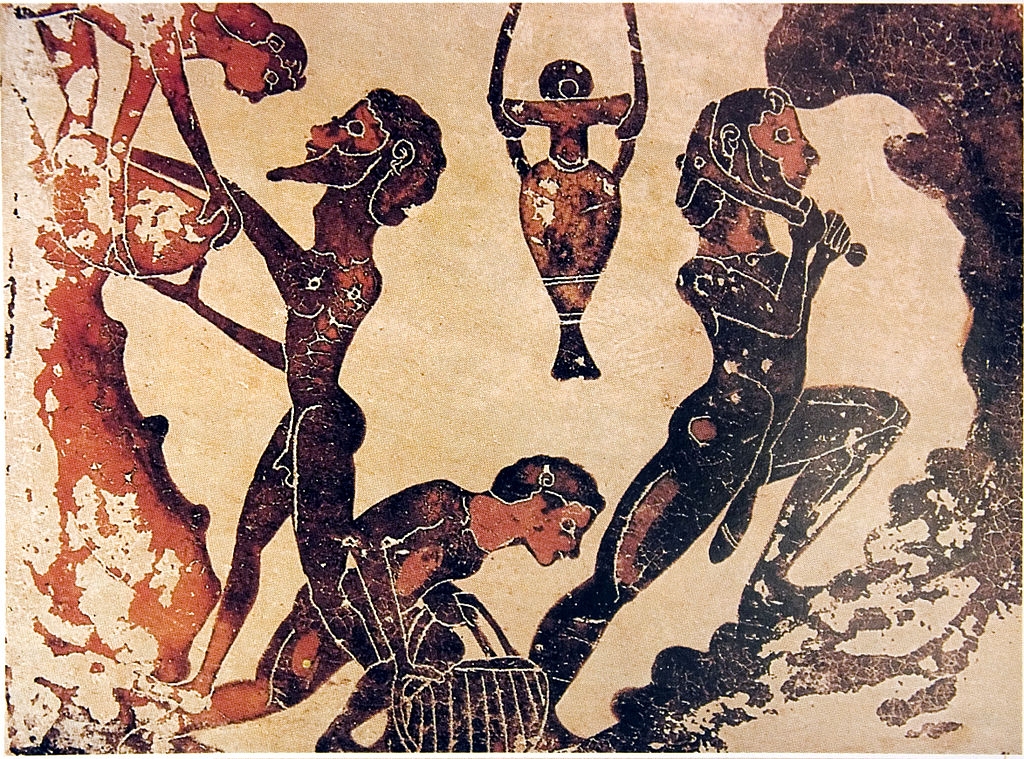
Defining the True Meaning of Racism:
The Law & Religion of Colonial America
Part III
Audra L. Savage
“Slave Ship: Slavers Throwing Overboard the Dead and Dying, Typhoon Coming On” by J.M.W. Turner 1840 / Wikimedia/ PD
This article is part of our “Race, Religion, and Law” series.
If you’d like to check out other articles in this series, click here.
This is the the third installment of a three-part series that explores legal, religious, and racial dimensions of American slavery. Part I explored some of the reasons why white Europeans selected Africans, out of all racial and ethnic groups, for forced, unpaid labor. Part II described some of the ways Black people were used as tools to achieve the goals of white people. This part concludes with a description of the manner in which the personhood, humanity, and agency of Black people were ignored and denied.
No Respect
The final aspect of racism is the use of Blacks as slaves without any respect for the personhood, humanity, or agency of Black people. The nature of slavery would seem to suggest the lack of respect for the individual and group involved. That is certainly the case for Black Americans, as demonstrated in the previous essays. The manner in which the laws and religions of the 17th and 18th centuries conspired together to oppress and maintain that oppression is heart-wrenching when seen through the perspective of a 21st-century observer. It is equally disturbing when viewed through the eyes of a person in the first or second centuries. Although pro-slavery apologists are correct when they argue that slavery has always existed in the history of humankind, it did not always take the shape and form of African slavery in America.
English slave law is thought to derive from the older law of villenage, which in turn was derived from civil (Roman) law. As African slavery developed, similarities between African slavery and Roman slavery were often made, most times as justification for the existence of slavery in the colonies. There were several key differences between African slavery and Roman slavery, however, and these differences underscore the total degradation of the humanity of Blacks in early America.
In ancient Rome, anyone could be a slave, as slavery was usually the result of captivity in war or payment of debts. It was not confined to a single ethnic group or race.
The most glaring difference between ancient slavery and African slavery was who qualified for slavery. In ancient Rome, anyone could be a slave, as slavery was usually the result of captivity in war or payment of debts. It was not confined to a single ethnic group or race. Historian Alan Watson writes that most legal records of Roman slavery bear on the enslavement of elite slaves who were often from the same class and race as their masters. As noted previously in this series, slavery in America was limited to Africans (and originally to Native Americans, though to a much lesser extent). This created a stigma against Black skin. In ancient times, one’s status as a former slave or relative of a slave could not be presupposed because it did not depend on race or ethnic grouping. In America, however, one’s skin color was a permanent marker of difference. This marker limited the mixing and interacting between races. In ancient Greece and Rome, slaves could intermix with masters after they were freed. This type of social interaction would not happen in colonial (or antebellum) America.
Another important difference is the notion of a slave as “thinking property.” In ancient Rome, slaves had the ability to acquire property, make a contract, and even bind their master to an agreement. Roman slaves had duties and functions that slaves in America were not likely to perform. The African was not thought capable of performing any such higher-level tasks because of their supposed low (or nonexistent) intelligence. Early in colonial America, slaves were allowed to own a bit of property (such as cattle or dogs), farm a plot of land, and hire their labor out for the sake of themselves and the masters. As noted above, this changed as slave laws became more controlling and the rights of slaves severely diminished. This again highlights the total deprivation of personhood for the African slave as they were reduced to pure chattel property―a thing not worthy of exercising the smallest part of their brain.

Slaves working in a mine in Laurium, Greece. Painting on Corinthian terra cotta platelet, 5th century BCE / Wikimedia / PD
A final difference between African slavery in America and ancient Roman slavery is the mutability of the slave’s status. As mentioned previously, slavery in ancient Rome was not necessarily a lifetime condition, nor was it hereditary. Because slaves were allowed to earn wages or obtain money from other sources and save that money, it was possible for them to buy their freedom. It was also possible for the term of slavery to end and the slave to be set free. As such, once the slave was free, they were equal members of society; they ceased to carry the burden and stigma of their former status of slave. Under law, they could easily transition from being an object, a piece of property, to fully human with rights.
While it was possible for African slaves to be emancipated, free Blacks never achieved full equality. They lived in a quasi-free status. They were technically not enslaved, but could at any moment, be pulled into, or back into, slavery. Their status was precarious at best. As Paul Finkelman notes, free blacks were better off than slaves but were still second-class citizens. The states in the South may limit the rights of free blacks just as much as slaves. The Virginia slave laws described previously demonstrate this, as some of the laws apply only to slaves while others apply to “Negroes,” which includes slaves as well as free Blacks. In the North, free Blacks still faced prejudice, even if slavery was outlawed, as well as the fear of being (illegally) captured under the auspices of fugitive slave laws.
The above description highlights but three differences between African slavery and ancient slavery. Since slavery has existed for thousands of years, there are naturally many more traits that distinguish African slavery from other types of slavery. Further, there were exceptions as some slaves had greater responsibilities for their masters’ affairs than law or custom allowed. However, the differences between Roman and American slavery highlight the debilitating nature of slavery in colonial America before the Revolution. They demonstrate the lack of personhood, humanity, and agency granted Blacks at the forming of the nation.
Conclusion
Based on the law and religion of colonial America, racism is the use of Black people to achieve the goals of white people without respect to the personhood, humanity, and agency of Blacks. It is important to consider this historical definition of racism as America continues to grapple with the legacy of slavery, which still affects the diminished flourishing of Black people. This is not to suggest that other groups have not been oppressed or marginalized―to the contrary. Instead, this definition offers a useful framework for analyzing racial justice today. One thinks of an NFL star whose career was sidelined because he chose to fight against the killing of Black men by police. Once he insisted upon his personhood, humanity, and agency by speaking out and speaking for others, his usefulness to make money for the league owners (who are all white) was then called into question. Or perhaps one thinks of the usefulness of Black voters to the goals of politicians during primary or general elections, but whose concerns are muted once the politician is in office. The list goes on.
Perhaps by considering the root of bias and oppression against Blacks beginning the first time their feet fell upon these shores, the country can begin to acknowledge the true meaning of racism and then work to dismantle it.
Further Reading
Finkelman, Paul. “The Centrality of the Peculiar Institution in American Legal Development.” 68 Chi.-Kent L. Rev. 1009 (1993).
Frey, Sylvia R., and Betty Wood. Come Shouting to Zion: African American Protestantism in the American South and British Caribbean to 1830. Chapel Hill: University of North Carolina Press, 1998.
Higginbotham, A. Leon. In the Matter of Color: The Colonial Period. New York: Oxford University Press, 1978.
Jordan, Winthrop D. White over Black: American Attitudes toward the Negro, 1550-1812. 2nd ed. Chapel Hill: University of North Carolina Press, 2012.
Kidd, Thomas. “Protestant Evangelicalism in Eighteenth-Century America.” 1 The Cambridge History of Religions in America (Volume I: Pre-Columbian Times to 1790). Stephen J. Stein. Cambridge: Cambridge University Press, 2000.
Kidd, Thomas S. God of Liberty: A Religious History of the American Revolution. New York: Basic Books, 2010.
Wiecek, William M. “The Origins of the Law of Slavery in British North America.” 27 Cardozo L. Rev. 1711 (1996).

Audra L. Savage, SJD is Senior Lecturer and Postdoctoral Fellow at Emory University School of Law and the Center for the Study of Law and Religion, as well as a McDonald Distinguished Fellow. Her work examines the law’s effect on the rights of racial and religious minorities, engaging several different fields of study.
Recommended Citation
Savage, Audra L. “Defining the True Meaning of Racism: The Law & Religion of Colonial America – Part III.” Canopy Forum, March 30, 2020. https://canopyforum.org/2020/03/30/defining-the-true-meaning-of-racism-the-law-and-religion-of-colonial-america-part-3/

